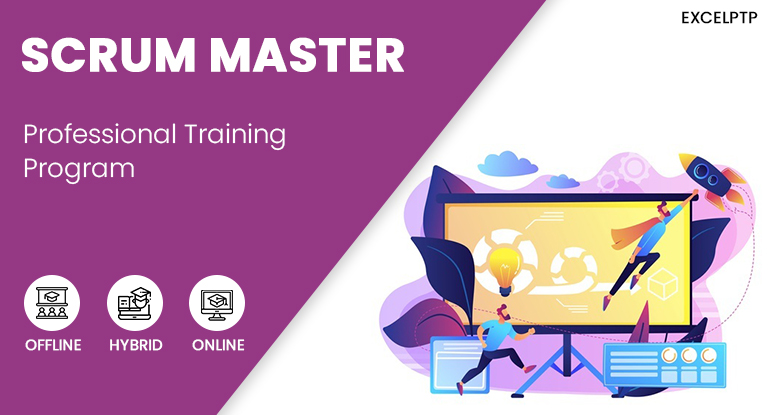
| Course Level: | Beginner to Advanced |
| Course Duration: | 4 Months | 8 Months |
| Training Days: | Monday to Friday |
| Training Time: | 4 Hours/Day | Regular Office Hours |
| Course Mode: | In-class (Offline) at our premises |
| Course Type: | Job-Oriented Training |
| Course Start: | Upon Registration / Admission |
| Class Size: | 1-to-1 | No Groups | No Batches |
COURSE BENEFITS
-
Your Final Training Destination: We focus on real knowledge and practical skills—your training ends only when you secure a job.
-
Discover Your Strengths: We help you choose (or suggest) the right technology based on your abilities and career goals.
-
Recognize Your Skills: The entire program follows industry practices, and on successful placement, you receive an experience letter to validate your expertise.
-
Be a High-Paid Fresher: Our unique training and placement model helps you secure the best possible starting salary. If you receive a better offer than ours, you are free to join them.
-
No Limits on Learning: There is no fixed syllabus. Learn as much as you want—beyond standard topics—to build strong logical and technical skills.
The Agile Scrum Master Professional Course is total 20 Hours, and will deliver this training while having more than 1 trainee or group.
An Overview of Agile and Why Agile?
Significance of Agile
Agile Manifesto
Various Principles in Agile
Agile Frameworks
Project Management: The Changing Scenario
Agile: Traditional Approach
Agile Facts and Figures
Agile: Estimating, Planning, Monitoring, and Control
Agile on Complex Projects
Agile Methodologies
Crystal and Properties in Crystal
Samples of Crystal
Feature-Driven-Development
Roles in FDD
Processes in FDD
Project tracking in FDD
Project tracking methodology
FDD usage guidelines
Dynamic Systems Development Methodology (DSDM)
Planning in DSDM-Atern
DSDM Principles and techniques
eXtreme Programming
XP Values, Practices and Benefits
Agile Unified Process
Agile Unified Process (AUP)
Agile Unified Process – System Development
Scrum
Scrum Life-cycle
Stakeholders
Chicken and Pig roles
Management of stakeholders
Scrum life-cycle
Product Owner
Product Owner’s role
Prioritization
Cost-Benefit Analysis
Prioritization based on Value and Risk
Prioritizing requirements - MoSCoW, Kano Model, Relative weighting method
Scrum life-cycle
Scrum Master
What does a Scrum Master Do
What the Scrum Master Should NOT do
Scrum life-cycle
The team – aka Developers
Building a Scrum team
Building empowered teams
Role of a Manager
Manager 2.0: A new role for a Manager
Time-boxing
Advantages of time-boxing
Time-boxing, Release
High-level view of a release
Sprints
Factors in selecting a Sprint duration
Intensity of work
No changes in a Sprint
Daily Scrum
Sprint Review
Also check during a review
Sprint Retrospective
What is a Sprint Retrospective
Making retrospectives effective
Making retrospectives effective
Product backlog
Product, release and sprint backlog
User story
Story card information
Multiple stories may be required to complete a feature
Epics
Writing good stories
Splitting user stories
Splitting user stories (big picture)
Splitting user stories (user experience)
Splitting user stories (Others)
Refactoring
Pair programming
Continuous integration
Practices of continuous integration
Configuration management
Quality in Agile
Scrum Quality – Home truths
Planning for a Sprint
Test-driven development
Test-driven development
Advantages of TDD
Definition of “Done”
Principles behind Agile planning
Iterations allow for mid-course corrections
Multiple levels of planning
Release planning
Steps to planning a release
Release Planning, Velocity
Sprint planning
Velocity driven sprint planning
Commitment driven sprint planning
Planning for each story
Principles behind Scrum estimation
Estimation techniques
Types of estimates
Uncertainty in estimates
Over-estimation and under-estimation
What contributes to size
Measures of size
Ideal days
Story points
Estimation techniques – Planning poker
Affinity estimation
Affinity estimation - process
Monitoring Scrum Projects
Definition - Metrics
Types of metrics
Metrics do’s and don’ts
Charts in Scrum
Burn-down chart: Iteration level
Burndown chart: Project level
Burndown chart: Bar style
Burn-up and Burn-down chart
Cumulative Flow Diagram
Parking lot diagram
Escaped defects found
Velocity,Progress Chart
Niko Niko calendar
Information radiators
Information radiators: Big visible charts
Information radiators
Scrum on large projects
Scrum-of-Scrum
Product coordination teams
Scrum on maintenance projects
Distributed scrum teams
Best practices in distributed scrum
Structure-1: Team in India; PO in US
Structure-2: Team split in two locations
People practices in distributed Scrum
Practices in distributed scrum
Practices in distributed scrum
Scrum-Contracting
Fixed Price/fixed scope
Scrum in fixed price projects
Transitioning a team/project to Scrum
The Agile Scrum Master Professional Course is best suited for:
Team Leaders
Project Managers
Members of Scrum teams such as developers, Scrum Masters, and product owners
Managers of Scrum teams
Teams transitioning to Scrum
Professionals intending to pursue the Scrum Master certification
Software Developer and Freshers
LEARN WHAT SUITS YOU BEST
No limits on learning, duration, interviews, or salary growth. Learn as much as you want and get fully prepared for your first job—with complete freedom to grow at your pace.
4 MONTHS TRAINING(CODE :- PTP 4)
-
4-month intensive training program
-
Monday to Friday (4 hours per day)
-
Only practical, hands-on learning
-
Individual 1-to-1 personalized training
-
Training by professional industry developers
-
Stipend offered based on performance
-
Guaranteed job through our on-job training model
-
Ideal for Diploma/Graduates (any stream), career switchers, and IT enthusiasts
12 MONTHS TRAINING(CODE :- PTP 12)
-
Up to 12 Months or Until Placement
-
Monday to Friday (full day Adjusted Based on Work Opportunity)
-
Live Work-Based Training with a Collaborative Team
-
1 to 1, Real-World Project Experience & Industry-Standard Skills
-
Unlimited Placement Support with Dual Job Opportunities
-
Industry Diploma Recognized as Experience + Training Certificate
-
Join as a Fresher, Graduate as an Experienced Professional Developer
-
10+2, Diploma/Graduate (Any Stream), Career Changers & IT Enthusiasts.
































